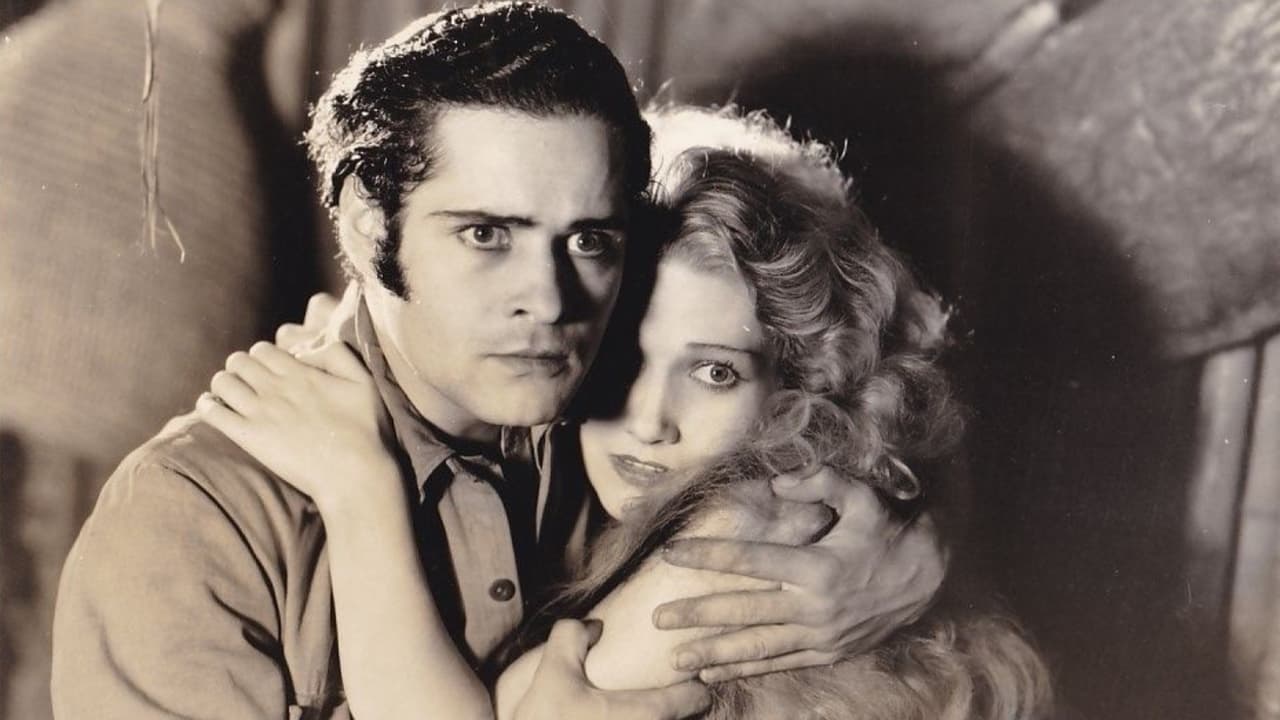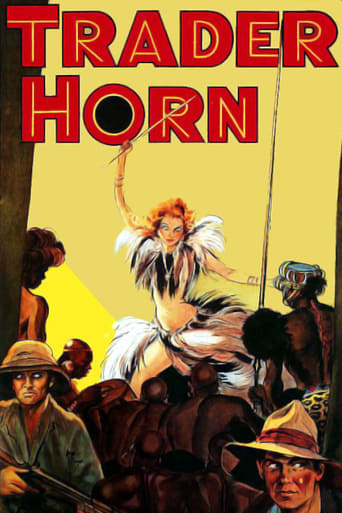



Lack of good storyline.
Critics,are you kidding us
I didn’t really have many expectations going into the movie (good or bad), but I actually really enjoyed it. I really liked the characters and the banter between them.
View MoreActress is magnificent and exudes a hypnotic screen presence in this affecting drama.
View MoreI took a chance on this with a purchase from one of the internet companies manufacturing DVDs from long out of print movie sources. This is a leisurely black and white film of two hours that peaked my interest on several occasions and kept me watching, avidly, for the entire course. The cast is great, with Carey playing a tough hunter-trader who nevertheless displays his tender moments as well. Renaldo, apparently a Romanian at birth, later became the Cisco Kid star of the television serial, plays a likable young man. The lovely Booth, who first appears as little more than a blonde animal, slowly begins to get in touch with her feminine side as the movie progresses. I liked these people along with the stoic and dependable gun-bearer. Filmed over seven months in just the right locations in Africa, the crew was plagued by the hostile elements: Booth became extremely ill as a consequence, and two extras actually died, one to a crocodile and the other to a charging rhinoceros. The movie therefore touched me personally and brought back old memories. In 1978 at the age of 23, the same age that Renaldo plays in the movie, I spent six months in Africa, first crossing the Sahara north to south, then from north Nigeria into Chad and into the Cameroon, Central African Empire, Zaire, and out through Uganda into Kenya. Judging from my experience, I believe that much of the film took place in the Cameroon, Central African Empire and northeastern Zaire (Congo). My troubles were not with marauding tribesmen, but with killer bees, various revolutions, sundry criminals, millions of army ants, bad water, and scorpions, etc. I personally attest that these are real Africans, real African villages, real animals, and this authenticity, including the native drums, brought me back to my youth and life living on the ground in a small tent through similar villages and terrain. Three exciting phases in the film hit me hard: all while in the native villages. When you are vastly outnumbered on somebody else's terrain and they are armed with spears and growing excited from the relentless throb of the drums, you might count your life in seconds. Ah, but it beats dying slowly behind a desk! You will flinch at several of the racist words in this film, but will also recognize the love and respect between Carey and his gun-bearer. Such emotions come easy between men who have each other's backs. Grab this film and sit back and enjoy without distraction!
View MoreAs sheer entertainment, the movie more than succeeds. Sure, the storyline seems familiar— intrepid white men leading safari to rescue white girl amid wilds of untamed Africa. But check out all the great vistas and teeming wildlife, even if the beasts-in-combat was filmed later in Mexico-- evidently the Africa end of the production was as much an ordeal as the storyline itself (IMDB).Carey is convincing as the chief trader. He's got a way of tossing off dialog as though he's just thought of it, and his Trader Horn remains a commanding figure throughout. Booth is almost scary as the tribal white girl, twisting her angular features into grotesque shapes that few Hollywood glamour girls would dare risk. However, the make-up man feminizes Renaldo with enough eyeliner to embarrass Estee Lauder. I realize he needs to be attractive enough to turn the white goddess around, but in the process he's been made pretty rather than safari handsome.One thing to note is the centrality of sound to the drama. The roar of that spectacular waterfall impresses, as do the native drums and tribal hubbub. Perhaps the sound track is heightened because of the newness of the technology (1927), but it does add a lot.As a Third World document, however, the movie's very much a creature of its time—the casual slurs, the butt-kicking, the girl's sudden preference for the white world. Such racial assumptions shouldn't be surprising given the time period; at the same time, the rich spectacle remains, including that inspired final shot. All in all and despite the drawbacks, this influential antique remains worth catching up with.
View MoreTRADER HORN is somewhat of an endurance test to watch. The first hour is a compilation of animal wildlife footage filmed entirely on "The Dark Continent", which looks even darker in the murky B&W cinematography on display here.The plot doesn't pick up until the first hour is over, thanks to the entry of EDWINA BOOTH, a white woman who seems like a threat to both Trader Horn (HARRY CAREY) and his young hunter friend (DUNCAN RENALDO), a naive young fellow who is constantly being tutored and lectured by the grizzly older man who knows all about the jungle. But once the threat is over, she becomes a safari mate and the two men fight over protecting her as they make their way through some dangerous turf.Most of the wildlife footage is seen at a distance and is the sort of footage that would later adorn the Johnny Weissmuller films at MGM whenever a Tarzan film needed some extra background shots. It's definitely not up to the standards that "Wild Kingdom" achieved in color film much later on.Booth, a very beautiful woman, makes an interesting impression once she settles down to give a performance, and the men do the best they can with the material on hand. Carey seems not an ideal choice for the leading role and his character never has much warmth, but Duncan Renaldo does nicely as his sidekick, boyishly enthusiastic about every sort of adventure awaiting them.It's an uneven film, hurt by its excessive length and the fact that there is very little plot development until the film is past the midway point--and even then, it ambles slowly toward a sluggish conclusion.The crew deserves praise for putting up with six months of the shooting schedule in darkest Africa, but it's doubtful that today's viewers will be satisfied with the slow moving tale burdened by dark, murky looking photography.As is often the case with movies from this era, there is no background music at all on the soundtrack except for the opening title credits.
View MoreThe comments of Ron Oliver and marcslope are interesting and informative and yet what occurs to me is that this antique with all its racist assumptions about the violence and mystery of 'the dark continent' is a relic of late 19th-century Boys' Adventure fiction. These stories by H. Rider Haggard and Edgar Rice Burroughs (as well as dozens of others now forgotten) seem to have had a surprising and lasting life in early talking pictures: TARZAN, THE GREEN GODDESS, SHE and countless serials all featured these mythic adventurers, forgotten white gods and goddesses and black 'savages,' both noble and blood-thirsty. Seeing TRADER HORN reveals that it was among the first and most influential of these movies, so it's unfortunate that it is so little known today.That's no doubt due to its casual racism as well as the pre-code nudity on the part of the African women filmed on location. But TRADER HORN's naiveté and breath-taking political incorrectness make it a rather fascinating primitive. There are other marks against it: an overlong running time, too-leisurely pacing, wild-life photography that is often dull or (in the case of the slaughter of a rhino and a lion) sickening.But on the plus side: Harry Carey's direct, natural and gruff performance has been noted by others. I was far more interested in Duncan Renaldo and Edwina Booth. Renaldo was so personable and extraordinarily handsome -- he looked like a prettier Don Ameche and from certain angles seems a dead ringer for a black-haired Brad Pitt -- that I was astonished to have never heard of him. He was certainly no great actor, and yet he had a definite physical presence and was highly photogenic. His Hispanic accent must have been the primary impediment to a career in 'A' pictures. The (in some ways) legendary Edwina Booth turns out to have had a strong facial resemblance to Marlene Dietrich, and like Dietrich she's not a very expressive actress. And yet she throws herself wholeheartedly into her portrait of a wild, willful and childish White Goddess, spitting out all of her dialog in unintelligible movie African. It's camp for sure, but also a gutsy performance.And the scene in which Carey and Renaldo first meet Booth is memorable: after appearing in their hut wearing only a monkey fur bikini (and showing the kind of long, lean, cut body that contemporary taste demands) she proceeds to have a shrieking tantrum while flogging every African in sight. When confronted by the gorgeous Renaldo, she proceeds to whip him as well (in a scene that obviously inspired a similar one in Clara Bow's CALL HER SAVAGE a year later) while he simply smolders and hardens and she becomes aroused. It is a provocative scene of real sexual tension and something of a revelation.A bigger one is the fact that in plot and iconography TRADER HORN was an obvious influence on the far more famous and evocative KING KONG. Having grown up with Kong and Fay Wray I was shocked to be watching TRADER HORN for the first time only to note that Carey begot Robert Armstrong as Booth begot Fay Wray and Renaldo begot Bruce Cabot. Such are the random ways that imitation can sometimes unintentionally inspire great folk art.
View More